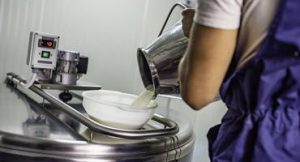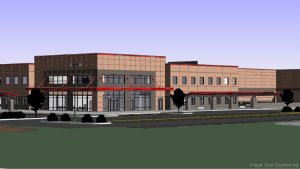
The department released the results of the referendum July 1, stating the Quota Implementation Plan approved by producers through a referendum in late 2017 will not be terminated.
The referendum was a result of a petition to end the program by March 1, 2025.
Passage of the referendum required a “yes” vote from 65% of voters producing 51% of the voting milk or 51% of the voters producing 65% of the voting milk.
Of the 933 eligible producers, 733 or 78.56% voted in the referendum with 49.25% voting in favor of terminating quota, falling short of satisfying the 51% threshold. Those producers accounted for 54.47% of the voting milk, falling short of satisfying the 65% threshold.
The program, which assesses all Grade A milk producers to pay a premium to quota holders, has been a contentious battleground since producers joined the federal milk marketing order system in 2018. The marketing order has no quota provision.
Language sponsored by Rep. David Valadao, R- Calif., in the last farm bill, however, allowed California to maintain a stand-alone quota program if it joined the federal order system. Maintaining that program was crucial in securing producer votes to join the federal order system.
The program has stuck in the craw of those who don’t own quota or don’t own enough quota to get any benefit. But it is considered a valuable asset by those who do benefit. They say they have either inherited it or invested in it to augment their milk check, save for retirement or remain competitive where expansion isn’t possible.
The issue has divided families and friends and led to the formation of United Dairy Families of California, which has sought an equitable resolution and unity in the industry. The group submitted the petition to sunset the program based on producer meetings and an economic analysis of the situation but had no stake in the outcome of the referendum.
The referendum was a test to determine if the industry could come together on a compromise or continue to fight it out, said Dino Giacomazzi, one of the organizers of United Dairy Families.
The organization’s mission was to get producers to vote on what they wanted to do with quota, and it succeeded, he said.
United Dairy Families “was formed because we recognized the co-ops and trade organizations had a conflict over the issue,” he said.
UDF took a leadership role to bring the feuding factors together to have a conversation about quota, and its job is done, he said.
“The only thing left is for the leadership structure — the co-ops and trade organizations — to continue the conversation,” he said.
That the referendum lost by a hair “demonstrates to me the industry is split right down the middle. It’s clear division in the industry still exists,” he said.
Cooperatives have the leadership to find compromise, and it’s now their opportunity to step up and do it, he said.
“I’m sure the co-ops will help their producers come to a reasonable conversation. The industry can’t push this division under the rug for very long,” he said.
The quota program was instituted in 1969 to win support for a state marketing order that more equitably pooled milk and distributed payments for milk across different utilizations. It allowed producers with existing Class I contracts to receive a higher price for their milk than the market average, or blend price.























